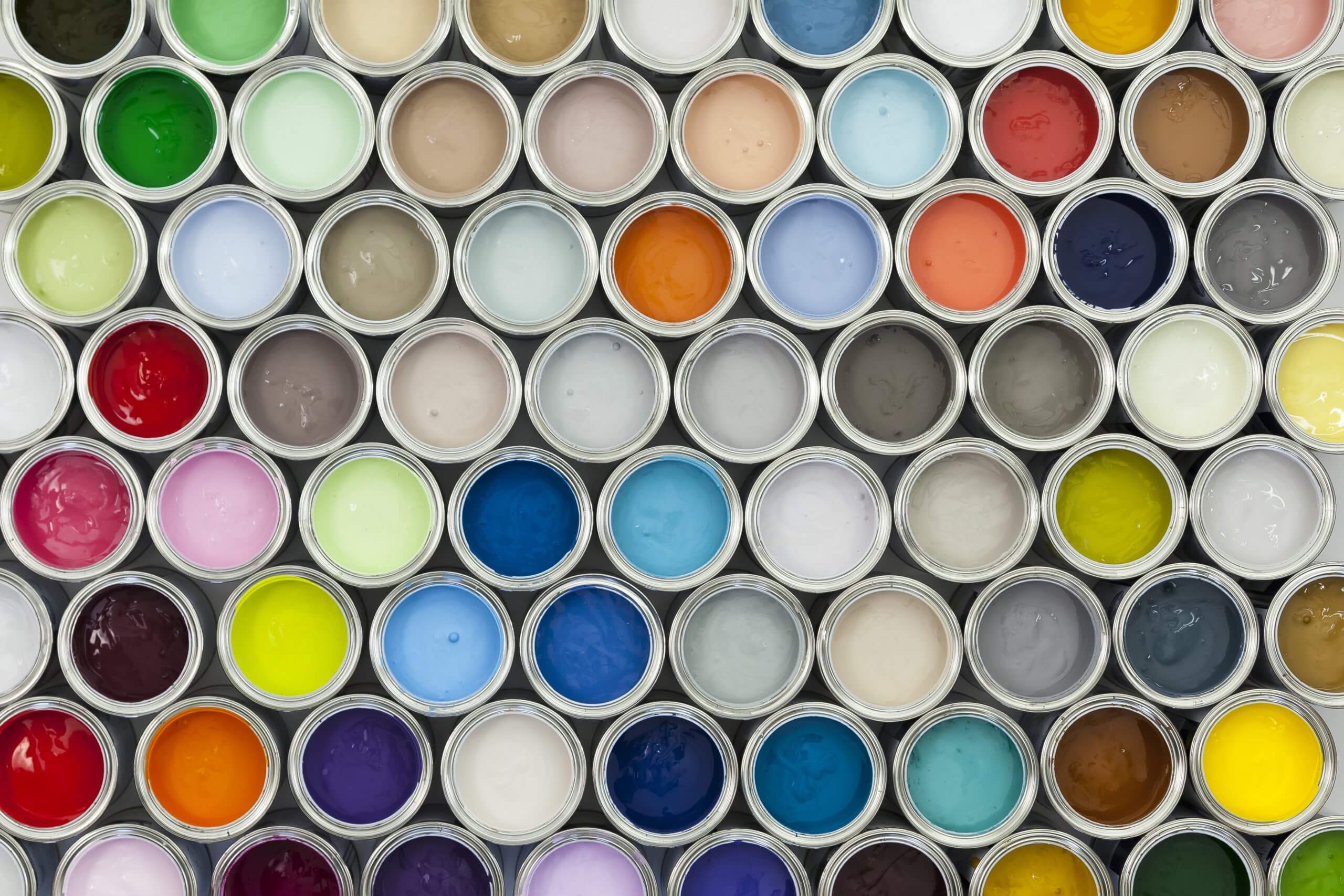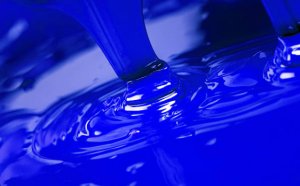Introduction: The Importance of Calcium Carbonate in the Paint Industry for Quality and Cost Efficiency
The paint industry, a realm of vibrant hues and transformative possibilities, hinges on its ability to deliver high-quality products that are also cost-effective. In this regard, calcium carbonate plays an instrumental part in ensuring both these factors are met, serving as the backbone of many paint formulations. From bettering the paint’s properties to reducing production costs, the utilization of calcium carbonate is an integral component in the paint industry's quest for quality and cost efficiency.

Calcium carbonate, a naturally abundant mineral, is characterized by its high brightness, low oil absorption, and favorable rheological properties. Not only does it enhance the paint's opacity and whiteness, but it also improves its durability and resistance to weathering. These benefits are critical in delivering a high-quality finish to surfaces, ensuring that painted structures maintain their aesthetic appeal over extended periods.
Moreover, the cost-effectiveness of using calcium carbonate in paint production cannot be overstated. Its availability and affordability help keep manufacturing costs in check, making it an ideal raw material for paint producers. By substituting more expensive components with calcium carbonate, manufacturers can achieve significant cost savings without compromising the performance of the paint.
In addition, the environmental impact of using calcium carbonate is relatively low. It is considered a safe, non-toxic substance that poses minimal hazards to health and the environment, contributing to the paint industry's efforts toward sustainability and environmental responsibility.
As we delve further into this topic, this article will shed light on the various ways calcium carbonate influences the properties of paint, its impact on cost reduction in the paint industry, and why it remains a preferred choice among manufacturers. Understanding the role of calcium carbonate in the paint industry is pivotal for appreciating the balance between quality and cost efficiency in this color-filled world.
Section Title: How Calcium Carbonate Enhances the Technical Properties of Paints and Coatings
Calcium carbonate, a versatile and abundant mineral, plays a pivotal role in the formulation of paints and coatings. This naturally occurring compound delivers a plethora of technical advantages, making it a key ingredient in the coatings industry.
The inclusion of calcium carbonate enhances paint properties and optimizes their performance. It acts as an extender, increasing paint volume without compromising its opacity. It promotes a high degree of whiteness and brightness, lending a clean, crisp look to the final coating.

Calcium carbonate's inherent alkalinity also serves a crucial protective role. It safeguards the paint from acidic elements, thereby increasing its durability and lifespan. This mineral's alkaline nature also contributes to the anti-microbial properties of paints, preventing the growth of mold and fungus.
In addition, calcium carbonate offers the advantage of improved rheology. It can modify the flow and viscosity of paints, making them easy to apply. Its particle size and shape can be tailored to control the gloss of the coatings, offering a desirable matte effect.
Moreover, calcium carbonate is an economical choice. It is cost-effective and can reduce the amount of expensive pigments required, without sacrificing the paint's quality or performance. Its eco-friendly nature further heightens its appeal, contributing to sustainable, green practices in the coatings industry.
In terms of technical properties, calcium carbonate contributes to the overall hardness of the coating. This hardness imparts resistance to wear, abrasion, and weathering, ensuring the coating remains robust and visually appealing for longer periods.
The role of calcium carbonate in the paints and coatings industry is undeniably significant. Its numerous benefits not only enhance the technical properties of these products but also contribute to cost efficiency and sustainability. In essence, calcium carbonate serves as the backbone, enhancing the durability, aesthetics, and performance of paints and coatings.
The role of calcium carbonate in reducing production costs in the paint industry is both profound and multifaceted. This naturally occurring compound, substantial in its abundance and low in cost, presents an array of compelling advantages that can enhance the efficiency and sustainability of paint production processes.
Among the primary reasons why calcium carbonate is increasingly becoming a go-to resource in paint production is its cost-effectiveness. As a filler material, calcium carbonate helps to reduce the amount of expensive pigments needed to achieve the desired opacity and brightness in paint. This provides manufacturers with a substantial reduction in raw material costs, directly impacting the bottom line favorably.
In addition to its cost-saving benefits, calcium carbonate also improves the overall performance characteristics of paint. It enhances the paint's weather resistance, ensuring that the coating maintains its aesthetic appeal over time, even in harsh environmental conditions. This attribute directly contributes to customer satisfaction and brand loyalty, indirectly affecting the profit margins of paint manufacturers.
Furthermore, calcium carbonate plays a pivotal role in reducing the environmental impact of paint production. It is a low carbon footprint material that absorbs carbon dioxide during its life cycle. Its use in paint formulations can significantly reduce the industry's carbon emissions, contributing to the global effort to combat climate change.
Calcium carbonate’s compatibility with a wide range of paint types, from water-based to oil-based paints, further broadens its appeal. Its versatility makes it an invaluable component in the production of different paint products, catering to diverse customer needs.
To sum up, the use of calcium carbonate in the paint industry is a win-win situation. It does not only deliver cost-effective production but also ensures high-quality paint products and a greener manufacturing process. In a world where cost efficiency, performance, and sustainability are paramount, calcium carbonate is indeed proving to be a game-changer in the paint industry.
Types of Calcium Carbonate and Their Specific Applications in Paint Formulations
Calcium carbonate, a versatile mineral, plays a pivotal role in the paint industry. Its unique properties, such as high brightness, opacity, and a wide range of particle sizes, make it a preferred component in the production of various paint formulations. Understanding the types of calcium carbonate and their specific applications in paint formulations can greatly enhance the quality and performance of the finished product.

Three primary types of calcium carbonate are used in paint formulations: ground calcium carbonate (GCC), precipitated calcium carbonate (PCC), and quicklime, also known as calcium oxide. Each type has unique characteristics and applications.
Ground calcium carbonate, derived from naturally occurring limestone, is typically used in the production of decorative paints, industrial coatings, and construction materials. Its high brightness and light-scattering ability enhance the opacity and gloss of the paint, while its low oil absorption capacity helps maintain the paint's viscosity.
On the other hand, precipitated calcium carbonate is synthetically produced through chemical precipitation. This process allows for the control of particle size, shape, and distribution, providing an advantage over GCC in certain applications. PCC is often used in high-gloss decorative and automotive paints due to its ability to provide superior brightness, opacity, and a smooth finish. It also aids in the control of paint's rheology, enhancing its application properties.
Lastly, quicklime or calcium oxide, though less commonly used, finds application in the paint industry as a pH regulator and a drying agent. Its use can improve the durability and adhesion of the paint, particularly in outdoor and industrial applications.
Incorporating the right type of calcium carbonate into paint formulations can significantly improve product performance. Whether it's ground calcium carbonate's light-scattering ability, precipitated calcium carbonate's controlled particle attributes, or quicklime's pH regulation properties, each type brings a unique value to the paint formulation process.
Understanding these specific applications can offer valuable insights for manufacturers, enabling them to optimize their products' performance and meet the diverse needs of the paint industry. As research continues to advance in this area, the potential applications of calcium carbonate in paint formulations will undoubtedly expand, creating even greater opportunities for innovation and quality enhancement.
In the realm of paint manufacturing, the choice of fillers plays a pivotal role in determining the quality, properties, and overall performance of the final product. Among the multitude of filler materials available in the industry, calcium carbonate has notably etched its niche due to its exceptional attributes. However, the continual quest for innovation and improvement has led to the exploration of alternative fillers. This piece aims to provide a comparative analysis of calcium carbonate and alternative fillers used in paint manufacturing, to shed light on their respective strengths and potential limitations.
Calcium carbonate is an abundant, naturally occurring mineral that has found widespread application in paint manufacturing. The primary reason behind its popularity lies in its cost-effectiveness and availability. Additionally, calcium carbonate imparts a number of desirable properties to paint, such as opacity, brightness, and improved durability. It also acts as a rheology modifier, which can significantly enhance the paint's application properties.
Moreover, calcium carbonate is environmentally friendly. It is a non-toxic substance, which means it does not release harmful substances into the environment during its extraction, processing, or application. These factors make calcium carbonate an ideal filler for paint manufacturing.
On the flip side, alternative fillers such as talc, kaolin, mica, and silica have also made their mark in the industry. Talc, for instance, offers excellent scrub resistance and smoothness, making it ideal for high-end architectural paints. Kaolin, on the other hand, provides superior opacity and tint strength, attributes that are highly sought after in the paint industry. Mica and silica, though slightly more expensive, contribute significantly towards improving the weather resistance and anti-corrosion properties of paints.
However, one of the most significant challenges with these alternative fillers is their cost. While they may offer some unique advantages over calcium carbonate, their higher price points can be prohibitive, particularly for small-scale manufacturers or those operating in cost-sensitive markets.
In conclusion, while calcium carbonate remains a staple in paint manufacturing due to its cost-effectiveness, availability, and eco-friendly nature, alternative fillers offer a range of unique benefits that can enhance specific properties of paints. The choice between calcium carbonate and these alternative fillers ultimately depends on the specific needs and budget of the manufacturer. The ongoing research and development in this field promise to bring about more efficient, cost-effective, and environmentally sustainable solutions for the paint industry.
In the quest to promote sustainable practices and combat environmental degradation, industries worldwide are increasingly turning to eco-friendly materials. One such material that has emerged as a game-changer in the paint production industry is calcium carbonate.
Calcium carbonate, a widespread mineral found naturally in rocks, pearls, and shells, is a critical ingredient in paint production. Its environmental and sustainability benefits are transforming the industry, contributing significantly to the green revolution.
Firstly, the use of calcium carbonate in paint production considerably reduces the carbon footprint. Its extraction process requires less energy compared to other raw materials, resulting in a lower emission of greenhouse gases. Moreover, calcium carbonate is a non-toxic substance, thereby eliminating the risk of releasing harmful substances into the environment during its production, application, and disposal.
Secondly, calcium carbonate enhances the sustainability of paint production. Its abundant availability means that the risk of depletion is minimal, contributing to the longevity of resources for future generations. Additionally, calcium carbonate is relatively inexpensive, making it an economical option for paint manufacturers.
Calcium carbonate also contributes to the durability of the paint. Its inherent properties, such as high brightness, opacity, and weather resistance, enhance the lifespan of the paint, reducing the need for frequent repainting. This optimization of resource use further bolsters sustainability.
Moreover, calcium carbonate in paint production supports waste management. The industry can use calcium carbonate derived from waste, such as recycled concrete, shells, and limestone, thereby facilitating recycling and cutting down on waste.
Finally, calcium carbonate-based paint is safer for humans. It does not contain volatile organic compounds (VOCs), which are harmful to human health and the environment. This attribute aligns with the growing consumer demand for safer, greener products, making calcium carbonate an ideal ingredient in the paint production process.
In conclusion, the use of calcium carbonate in paint production presents a myriad of environmental and sustainability benefits. Its role in reducing carbon emissions, preserving resources, enhancing durability, facilitating waste management, and promoting human safety is pivotal in the industry's shift towards greener practices. In the light of these advantages, the incorporation of calcium carbonate in paint production is not merely an option; it is a necessity for environmental conservation and sustainability.
Challenges and Considerations in the Use of Calcium Carbonate in Paints
The use of calcium carbonate in paints has long been recognized for its capacity to create high-quality, durable finishes. However, despite its many advantages, the integration of this naturally abundant mineral also presents a unique set of challenges and considerations that paint manufacturers must contend with for optimum results.
One of the primary challenges in using calcium carbonate in paints is ensuring the consistency of the particle size. The particle size of calcium carbonate directly influences the opacity, gloss, and viscosity of the paint. Given its crucial role in determining paint properties, achieving a uniform particle size distribution is a complex task that necessitates rigorous process control and advanced milling technologies.
Furthermore, the interaction between calcium carbonate and the paint's other components is another important consideration. Calcium carbonate’s alkaline nature can react with certain paint ingredients, potentially affecting the overall stability of the paint. Therefore, careful formulation is required to maintain the paint's performance and longevity.
The purity of calcium carbonate is a significant concern as well. The presence of impurities such as silica, clay, or organic matter can adversely impact its performance in paint. They can cause issues such as reduced whiteness, increased abrasiveness, and decreased opacity, which can compromise the paint's quality. Therefore, sourcing high-quality, pure calcium carbonate is a critical step in the manufacturing process.
Lastly, the environmental implications associated with the extraction and processing of calcium carbonate cannot be overlooked. While calcium carbonate is a naturally abundant resource, responsible sourcing and processing are key to minimizing the environmental footprint. This involves adhering to sustainable mining practices, reducing energy consumption during processing, and implementing waste management strategies.
Despite these challenges, the use of calcium carbonate in paints offers significant advantages ranging from improved opacity and gloss to cost-effectiveness, making it a staple in the paint industry. With careful consideration of these factors and proactive measures to address them, paint manufacturers can continue to leverage the benefits of calcium carbonate while mitigating potential setbacks.
Conclusion: The Future of Calcium Carbonate in Advancing Paint Technology and Reducing Costs
As we navigate the future landscape of the paint and coatings industry, calcium carbonate stands out as a fundamental player. Its role in advancing paint technology and reducing costs provides a promising outlook for the industry.
Calcium carbonate's exceptional properties, such as high brightness, low oil absorption, and ease of dispersion, make it an indispensable raw material in paint production. It has proven its worth in enhancing the durability and visual appeal of paint while ensuring cost-effectiveness, a trait highly valued in the competitive market.
Moreover, the future of calcium carbonate in paint technology is intrinsically linked to sustainability. As we face the challenges of climate change and environmental degradation, the industry's shift towards eco-friendly solutions is inevitable. Calcium carbonate, being a natural, abundant, and non-toxic material, aligns perfectly with this green initiative.
The potential of calcium carbonate extends to the development of advanced paint formulations that offer superior performance and lower environmental impact. It can contribute to the creation of paints with improved scrub resistance, better opacity, and enhanced weatherability. This potential for improved performance and sustainability will likely drive further research and innovation in this field.
Furthermore, the economic implications of calcium carbonate usage in paint production should not be underestimated. It has a significant influence on reducing production costs due to its affordable price and high availability. By replacing more expensive additives, calcium carbonate can help manufacturers maintain competitive pricing, a boon in an industry characterized by high competition and price sensitivity.
In conclusion, the future of calcium carbonate in the paint industry appears bright. Its physical properties, environmental advantages, and cost-saving potential make it a key ingredient in the paint of the future. As research and technology continue to evolve, we can anticipate the emergence of even more innovative applications for calcium carbonate that will further revolutionize the paint industry.
